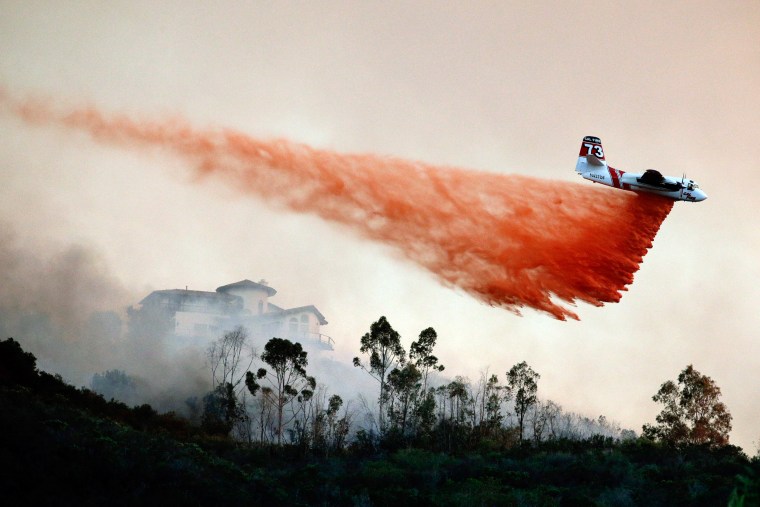As wildfire season heats up in the western United States, communities on the front lines are relying on aircraft — from nimble helicopters with night vision to lumbering tankers that date back to World War II — to keep conflagrations from morphing into catastrophes.
Air attacks are often the fastest and sometimes the only way to fight the blazes that are threatening countless homes and lives during this dry, hot beginning to the summer.
But crucial as they are, many of these firefighting planes aren't exactly state-of-the-art. Some of the air tankers — which dump water or flame retardant on fires — are more than a half-century old.
"This is the third generation of old military aircraft that have ended up causing multiple deaths," Jim Hall, former head of the National Transportation Safety Board, said in 2012.
A C-130 battling a California blaze in 2002 went down after its wings separated from the body, killing all three on board. Last year, a CalFire air tanker, made in 2001, crashed in a canyon in Yosemite National Park.

The Orange County Fire Authority in southern California relies on a more nimble fleet — a squadron of four helicopters that hold 375 gallons of water and come with a $2 million annual budget.
"These helicopters are worth their weight in gold because they can get up quickly and they can suppress a fire within minutes," said Capt. Steve Concialdi, a spokesman for the agency.
"If it saves one or two homes from burning, it has basically paid for itself for the entire year," Concialdi said. "Because when we get a fire that starts burning homes, the price tag to fight that fire gets into the millions of dollars."
The authority green-lighted a pilot program this year to keep helicopter crews staffed around the clock. Pilot Ethan Jensen said that gives Orange County a big edge.
"If a fire starts at 1 a.m. in the morning, traditionally there wouldn't be any aircraft on it until 7 or 8 o'clock in the morning and it's already had six or seven hours to get a head of steam on it," he said. "Now with the initial attack on it being at night, we can be on the fire hopefully while it's still small.
"If we can get on the scene when the fire's still relatively small, less than an acre or two ... that can make a huge difference in whether it stays small or if it becomes a large extended attack fire that can do days or even weeks."
